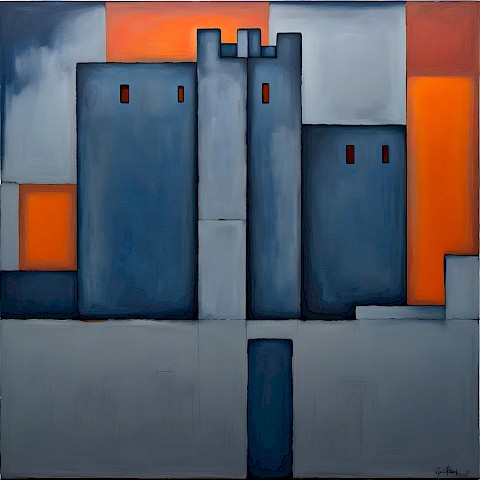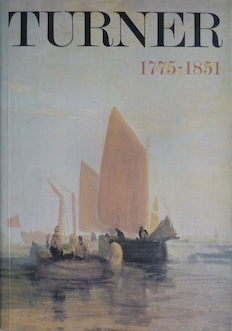|
16 XI 2024 |
4. Success at the Royal Academy 1801-12
074 - Chateaux de St. Michael, Bonneville, Savoy | |

| ||
|
Turner exhibited two paintings of Bonneville at the R.A. in 1803, following his visit to Savoy in 1802. The other was entitled 'Bonneville. Savoy, with Mont Blanc' and was last shown at Agnew's 1967 Turner exhibition (4, repr.). A third picture, very close to the second, was exhibited at the R.A. in 1812 as 'A View of the Castle of St. Michael, near Bonneville, Savoy' and is now in the Johnson Collection, Philadelphia Museum. Evelyn Joll, in the pamphlet accompanying the exhibition of this picture at Agnew's in July 1974, has discussed the related drawings and watercolours. There is a slight pencil sketch of the hills in the background (T.B.LXXIII-46v; repr. loc. cit., pl.), and a watercolour sketch (T.B.IXXX-H; repr. loc. cit., pl.2, and, in colour, Wilkinson 1974, p.55), and two finished watercolours, both probably later than the oil, the first in the Courtauld Institute Galleries (repr. loc. cit., pl.4), the other, dated 1817, formerly in the collection of Miss Tulia Swinburne. According to Farington, Lawrence observed to him on 4 May 1803, ‘that in Turner's pictures there are his usual faults, but greater beauties'. This picture ‘He thought remarkably fine'. It, rather than its companion, was almost certainly the work bought in 1804 by Samuel Dobree (1759-1827), perhaps from Turner's gallery. On 30 June 1804 Turner wrote to Dobree, 'and may I ask once more "am I to put out the cloud in the Picture of Bonneville?" If you can drop me a line decidedly yes or no this Evening or tomorrow morning it shall be as you wish'. Evidently Turner's letter did not reach Dobree in time for him to reply as a second letter from Turner states that he has not yet heard from Dobree. Therefore the cloud was presumably left 'in' and it is certainly much more prominent in this picture than in the other picture of Bonneville (see Hilda F. Finberg ‘Turner to Mr. Dobree', Burlington Magazine, xv, 1953, pp.98-9). It subsequently belonged to William Young Ottley (d.1836) and the Earl of Camperdown; its most recent private owner was Sir Stephen Courtauld. Here a very Poussinesque treatment is applied to a straightforward landscape without historical or mythological pretentions. Progression into depth is measured out by both solid forms and bands of light placed parallel to the surface of the picture, and the colours have a sharpness and clarity attuned to this classical composition. Evelyn Joll has demonstrated a particularly close relationship in general principles to Poussin's rooms in 1802. loc. cit., pl.3). This passed through the London salerooms in 1802. This work is also available as a painting. An image generated by an AI Machine Learning Model Property of the artist. | ||
